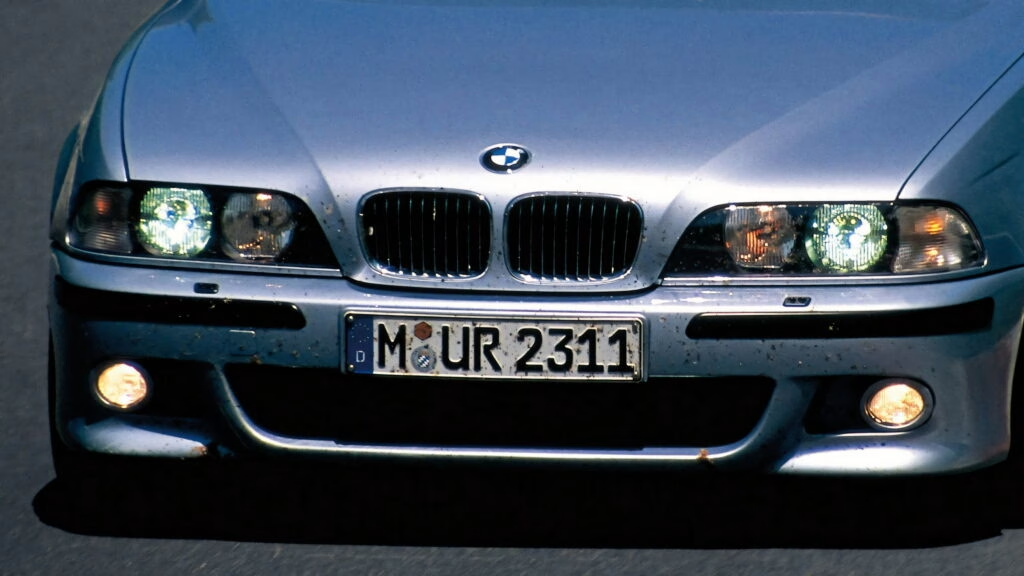How Close Did the E39 M5 Come to Getting a Turbo Six or V6?
Ask any BMW enthusiast to name the greatest M5, and odds are the E39 will be high on their list. Its reputation for balance, understated style, and that glorious naturally aspirated V8 is nearly untouchable. But here’s a twist: the E39 M5 almost took a completely different path under the hood—one that could have changed its legacy forever.
During development, BMW’s M division seriously considered powering the E39 M5 with either a turbocharged inline-six or, even more radically, a V6. This wasn’t just idle brainstorming. Karlheinz Kalbfell, then head of BMW M, was a die-hard fan of the inline-six, seeing it as the brand’s soul. He was skeptical about a V8, dismissing it as “too American” and “wasteful.” Yet, the engineering team faced a dilemma: the outgoing S38 inline-six had hit its performance ceiling, and turbocharging or downsizing to a V6 would have required a massive investment for a car expected to sell in modest numbers—just 2,000 to 3,000 units a year.
The result? Two years lost to dead-end development, with no clear path forward. In the end, practicality and cost won out. BMW shelved the six-cylinder options and pivoted to a V8, using the M62 as a starting point and evolving it into the now-legendary S62.
Why Did BMW Nearly Skip the US Market for the E39 M5?
It’s easy to forget now, but there was real uncertainty about whether the E39 M5 would even reach American shores. The E28 M5 had been a hit in the US, but its successor, the E34, didn’t light the same fire with buyers. BMW of North America was on the fence about continuing to offer M models stateside.
What changed? The company’s decision to bring the E36 M3 to the US, albeit with a different engine, proved there was still a passionate American audience for high-performance BMWs. That move helped tip the scales, ensuring the E39 M5 would make the transatlantic journey and, in the process, cementing its legend among US enthusiasts.
What Made the S62 V8 the Right Choice for the E39 M5?
After all the debate and delay, the S62 V8 turned out to be a masterstroke. BMW’s engineers took the M62 V8, bored it out, reworked the porting, and raised the redline. They added dual throttle bodies and a beefed-up oil system. The result was an engine that delivered 394 horsepower and 369 lb-ft of torque—numbers that, at the time, put the E39 M5 at the top of the sport sedan food chain.
But the S62’s magic wasn’t just in the numbers. It was the way it delivered power: smooth, linear, and always eager. The E39 M5 became known as the “gentleman’s sports car”—a machine that could devour autobahns and backroads with equal poise, yet never shout about its capabilities.
Could a Turbo Six or V6 Have Worked?
It’s tempting to imagine an alternate reality where the E39 M5 packed a turbocharged six or even a V6. Would it have been lighter? Maybe. More fuel efficient? Possibly. But the heart and soul of the E39 M5—its effortless, naturally aspirated power and unmistakable V8 soundtrack—would have been lost.
BMW’s own engineers admitted that developing a new six-cylinder engine for such a low-volume car just didn’t make financial sense. And a V6? That would have been a total outlier for a brand so closely tied to the inline-six tradition. In the end, the V8 wasn’t just the practical choice; it was the one that gave the E39 M5 its enduring character.
How Does the E39 M5’s Legacy Hold Up Today?
Decades later, the E39 M5 is still the benchmark for many when it comes to sport sedans. Its blend of analog feel, everyday usability, and thrilling performance is tough to match—even as modern M cars pile on horsepower and technology. Values for clean examples have soared, with some pristine cars fetching well over $100,000 at auction, according to recent sales data from leading collector car marketplaces.
Owners and experts alike point to the E39’s balance as its defining trait. It’s a car that feels just as happy on a cross-country road trip as it does on a winding mountain pass. And that S62 V8? It’s still revered for its reliability and character, a testament to the wisdom of BMW’s eventual decision.
The big takeaway? The E39 M5’s greatness wasn’t preordained—it was the result of tough choices and a willingness to adapt. Sometimes, the best outcomes come from embracing change, not chasing perfection. If you’re looking to make a smart move—whether in cars or life—start with one thoughtful adjustment this week. You might just find yourself on a road you never want to leave.

